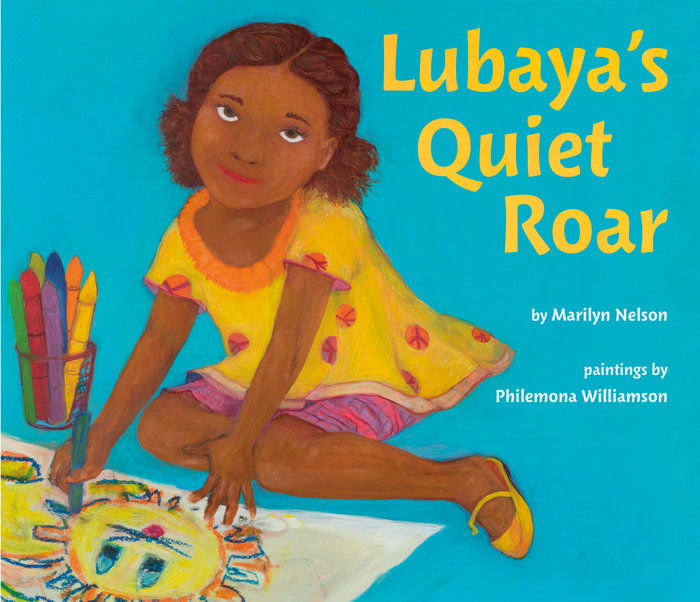NELSON, Marilyn
9 Articles
Last 30 days
Last 6 months
Last 12 months
Last 24 months
Specific Dates
From:
To:
Augusta Savage: The Shape of a Sculptor’s Life
 A master poet breathes life and color into this portrait of a historically significant sculptor and her remarkable story.
A master poet breathes life and color into this portrait of a historically significant sculptor and her remarkable story.
A Is for Oboe: The Orchestra’s Alphabet
 This fine overview of the orchestra is a great fit for all collections, especially school libraries, where music teachers could use this resource for instruction.
This fine overview of the orchestra is a great fit for all collections, especially school libraries, where music teachers could use this resource for instruction.
PREMIUM
Lubaya’s Quiet Roar
A great addition to any school’s collection, this book bridges a gap of understanding for others who may also have a quiet but powerful roar.
American Ace
 Nelson's latest deserves shelf space with other astounding verse novels, including Sharon Draper's Stella by Starlight, Jacqueline Woodson's Brown Girl Dreaming, and Thanhha Lai's Inside Out & Back Again. ["Nelson packs a good deal into these verses, and though the subject matter is weighty, she leavens it with humor and deep family affection": SLJ 12/15 review of the Dial book.]
Nelson's latest deserves shelf space with other astounding verse novels, including Sharon Draper's Stella by Starlight, Jacqueline Woodson's Brown Girl Dreaming, and Thanhha Lai's Inside Out & Back Again. ["Nelson packs a good deal into these verses, and though the subject matter is weighty, she leavens it with humor and deep family affection": SLJ 12/15 review of the Dial book.]
My Seneca Village
 This rich and diverse (a variety of poetic forms, including ones invented for certain speakers, are featured) piece of American literature belongs in every collection.—Luann Toth, School Library Journal
This rich and diverse (a variety of poetic forms, including ones invented for certain speakers, are featured) piece of American literature belongs in every collection.—Luann Toth, School Library Journal
Seneca Village in Manhattan was founded in 1825 by free African Americans; by 1857 it had been razed to make way for the construction of Central Park. In forty-one poems Nelson spans the life of the village through the imagined reflections of its inhabitants. Some we meet just once, while others reappear: Epiphany Davis, forecaster of the future; Frederick Riddles, schoolboy turned soldier; and Sarah Matilda White, hair-braider and gossip. Most of the characters are African American, with a few Irish and German immigrants who also made their home there. Through a range of poetic forms and voices, Nelson communicates the desires, fulfillments, and disappointments of the village residents, along with episodes from daily life and larger historical incidents such as the Shakespeare Riot and an address by Frederick Douglass (italicized historical notes help contextualize events). Poems appear on right-hand pages and are prefaced by brief text on the left—reminiscent of stage directions
American Ace
Nelson packs a good deal into these verses, and though the subject matter is weighty, she leavens it with humor and deep family affection.
How I Discovered Poetry
Gr 6 Up—Nelson traces her childhood and developing awareness of civil rights issues in this eloquent collection of 50 unrhymed sonnets...
Snook Alone
 K-Gr 4—This story in free verse tells of a small rat terrier that lives on an island with the monk Abba Jacob...
K-Gr 4—This story in free verse tells of a small rat terrier that lives on an island with the monk Abba Jacob...
ALREADY A SUBSCRIBER? LOG IN
We are currently offering this content for free. Sign up now to activate your personal profile, where you can save articles for future viewing









